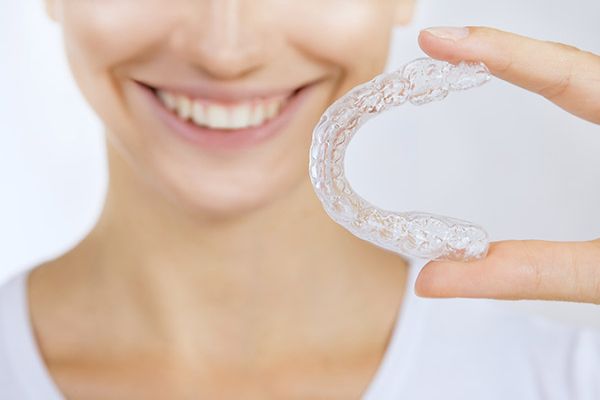An Invisalign® Dentist Takes These Steps to Create the Aligners
 We believe that patients should know all about a treatment option before they pursue it, which is why we have compiled this helpful list of facts and statistics.
We believe that patients should know all about a treatment option before they pursue it, which is why we have compiled this helpful list of facts and statistics.
A consultation with an Invisalign dentist is the first step to having straighter teeth using this revolutionary product. For decades people have used the same methods to straighten and realign their teeth, now with the invention of Invisalign® there is something new and better available. The first time you meet with our dentist it is to get an evaluation, which will tell us if you are eligible for the treatment. Typically most people are. However, since there are a few cases where the procedure may not be as effective, or the treatment may be hampered by some other underlying condition, we use the first visit to explore that potential. One important thing to note is that we do not use Invisalign with children, since the product is designed for adults and teenagers who have a full set of mature teeth. It also gives you the chance to have a conversation with the team and the dentist to ask any questions that you may have while getting a better understanding of the process used to give you better-aligned teeth. Once it is determined, through an exam and conversation, that you are a good candidate, we will proceed to the record gathering stage.
As an Invisalign dentist, we takes a lot of measurements, photographs, and x-rays to make sure that we provide the laboratory with exact details about your mouth. We will also take a dental impression, upon which the lab will base their modeling. For us, the objective is to give the laboratory a perfect picture of your teeth so that their fabrication and modeling can be extremely precise, fitting perfectly in your mouth and working to give you straighter teeth. Essentially the dental impression, taken by your Invisalign dentist, serves as a replica of the teeth that the technicians use to work with.
The technicians will scan the dental impression of your teeth, creating a three-dimensional model of your teeth on their computer. They will then use a simulation to formulate a plan for how to get your teeth from where they are today, to where we, as your Invisalign® dentist, want them to be at the end of the treatment. The simulation mimics the actual movement curve that your teeth will take once the aligners are placed on them. All of this is on a computer, which gives us access to it so that we can make changes and tweaks along the way. Once we have perfected the plan, the technicians will fabricate the aligners.
Invisalign works by gradually moving the teeth from their current position, into a new position, using pressure from these aligners. The aligners work in increments of 1/10th mm, which means that each time you place a new aligner into your mouth, it will be 1/10th of a millimeter straighter than your teeth. As you continue to wear the aligner, we recommend no less than 20 hours per day, your teeth will start to move so that they can fit tray perfectly. Once your teeth are in exact alignment with the Invisalign® tray, it will be time to move to the next tray and continue the process. As an Invisalign® dentist, we will supervise the process to ensure optimal results.
Recent Posts
When it is time to fix your teeth, gone are the days when the only option was to get traditional metal braces. These devices can be quite bulky, and they are highly visible in the wearer's mouth. That can leave the person feeling even more self-conscious than before the braces were installed.Things are much different…
A general dentist can help if you find yourself dealing with tooth pain. As uncomfortable as these sensations can be, they are your body’s way of letting you know something is wrong. It is typically one of the last symptoms of unaddressed dental issues to show up.Some of the reasons why you might experience toothaches…
Dental implants are often referred to by implant dentists as artificial tooth roots. This is because they work in a similar fashion as natural tooth roots. Dental implants hold replacement teeth (i.e. dental crowns) in a stable and strong position.By learning more about dental implants, you can determine if implant dentistry is right for you…
Talking to your general dentist about your dental anxiety can help start your dental appointment the right way. This condition can prevent you from getting the right dental treatments. Keeping it at bay is possible during the visit. Here are the details on how your general dentist can help relieve your dental anxiety.This is an…
 We believe that patients should know all about a treatment option before they pursue it, which is why we have compiled this helpful list of facts and statistics.
We believe that patients should know all about a treatment option before they pursue it, which is why we have compiled this helpful list of facts and statistics.
